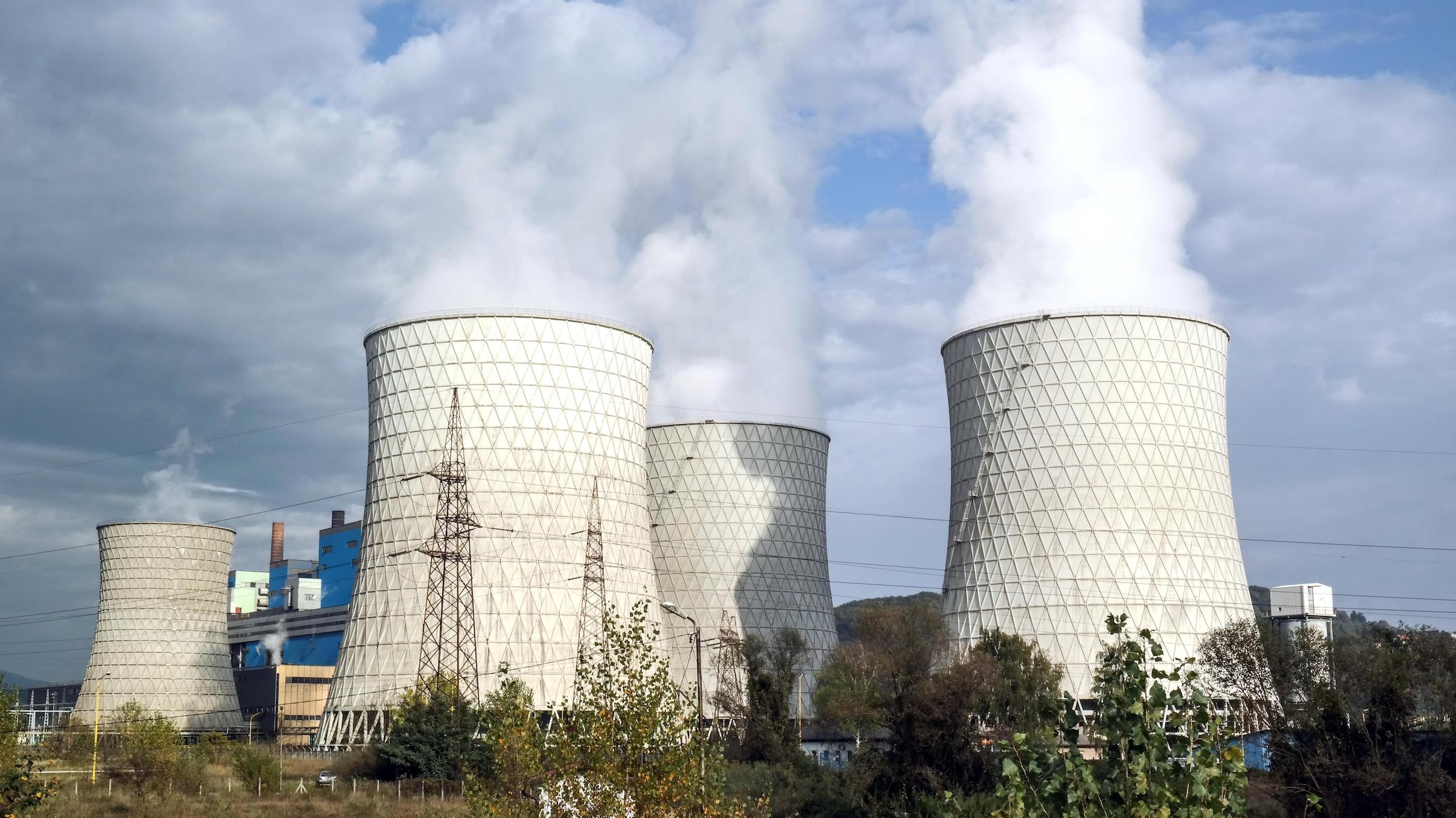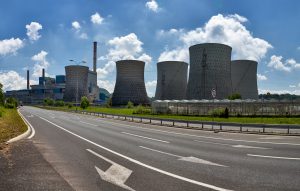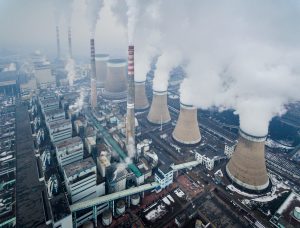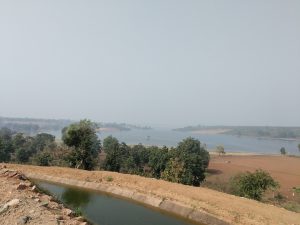In November 2019, groundworks began for a seventh unit at Bosnia and Herzegovina’s largest coal-fired power plant, Tuzla, in preparation for the arrival of Chinese construction crews. A spokesman for Bosnia’s state-owned power utility EPBiH confidently explained the ecological, economic and social benefits of Tuzla 7, and said construction would begin in spring 2020. Covid-19 has since delayed that.
The coal sector of the Western Balkans welcomed its first involvement from China in 2010, when state-owned enterprise Dongfang Electric agreed to build a greenfield power plant for a private investor in Bosnia, with a €350 million loan from China Development Bank. Since then, one new coal power plant has been built in the region, two are under construction and a further four are in planning.
Coal-fired energy generation in the Western Balkans has always posed a serious health risk, resulting in thousands of premature deaths every year. Now, the entrenched interests of politicians in the region and Chinese state banks and contractors, are threatening to lock one of Europe’s poorest and most polluted regions into decades more coal dependency.
Back in 2010, Chinese coal finance still competed against Western development and export banks such as the European Investment Bank, the European Bank of Reconstruction and Development, and the German state-owned bank KfW. But Western lenders retreated from coal financing in the course of the decade and China now stands alone in financing the expansion of the region’s coal sector.
The six Western Balkan states, Albania, Bosnia and Herzegovina, Kosovo, Montenegro, North Macedonia, and Serbia, are members of the Energy Community, an organisation tasked with integrating their energy markets with that of the EU. Member states have obliged themselves to adopt stricter emissions standards, liberalise their energy sectors and transpose parts of EU law into national legislation. Despite such commitments, several states keen to be a part of the EU are pushing through a significant expansion of their coal fleet.
Decarbonisation was never going to be easy for these countries. In 2017, reliance on coal (lignite in particular) for electricity generation reached 96% in Kosovo, 75% in Bosnia and Herzegovina, and 71% in Serbia. Entrenched coal interests exert a powerful political force: unwinding the coal sector will require job losses and an expensive “just transition” strategy. The same was true for south Wales, whose transition from coal is being studied by other regions, including the major coal-producing province of Shanxi in northern China. Yet the Welsh Development Agency received significant funding from national, EU and private sources over several decades. The capacity of Balkan states to finance and manage a just transition is questionable.
Tuzla 7
The Tuzla plant went into operation in 1963. The idea of replacing its ageing parts was mulled over in the 1980s, but plans were shelved during the Bosnian War of the following decade. The project then lay dormant until 2010, when the government revived it as part of a long-term energy strategy. Following a public tender in 2014, the state-owned power utility chose a consortium led by Chinese SOE Gezhouba, over Japan’s Hitachi. According to a document circulated to Bosnian parliamentarians, the selection of Gezhouba came after Hitachi communicated its unwillingness to co-finance the project through a joint venture company given “Bosnia’s political situation”. The key difference between the two bidders was Gezhouba’s offer of a €614 million loan from China Export-Import Bank. This enabled Gezhouba to face comparatively lower risks, as they are borne by the borrower (Bosnia and Herzegovina’s utility), the lender (China Exim) and the guarantor (Bosnia and Herzegovina’s government).
Tuzla has the seventh highest sulphur dioxide emissions of all power plants in Europe. A 2016 report by HEAL claimed that its particulate matter filters are regularly turned off at night, presumably to save costs under the cover of darkness. Analysis of disposed ash by local environmentalist group CEE also suggests the type of lignite and brown coal used at Tuzla contains elevated concentrations of chrome, nickel and arsenic. Another Chinese-financed project, the Banovići coal power plant, is also planned in the Tuzla region, which would further deplete already limited supplies of water. The additional coal capacity will require new ash disposal sites at the nearby town of Lukavac, triggering strong opposition from residents already hemmed in by a coking facility, a cement plant and a sodium carbonate producer with a large debris field known as the “White Sea”. Even if all goes as planned, Tuzla 7 will not be built in accordance with the EU’s resource and emissions standards, so a costly retrofit or premature closure are distinct possibilities.
Although supporters of the project frame Tuzla 7 as an improvement because it would replace older and less efficient coal units, the project has been beset by more than just environmental concerns. Like Slovenia’s Šoštanj 6, another lignite fiasco in the region, Tuzla 7 faces an uncertain economic future amid low electricity prices, rising carbon costs and competition from liquified natural gas and renewables.
When the Bosnia and Herzegovina parliament voted in support of the project, the provided documentation clearly stated Tuzla 7 would only be economically feasible if electricity prices reach €56.50 per MWh. Regional prices are currently hovering around €30/MWh and a team of World Bank analysts suggested a price of €56/MWh would only be reached around 2033 – before accounting for the cost of emissions mitigation. Even Germany’s far more efficient plants face rising carbon costs and competition from renewables, which is hurting profits.
Why hasn’t Tuzla 7 been cancelled?
Since the contractor was selected, nothing seems to be able to halt the project. Rijad Tikveša, head of Sarajevo-based NGO Ekotim, has been battling Tuzla 7 for years both in the country’s courts and at the Energy Community. While a case alleging prohibited state aid in the form of a loan guarantee is still open, the Energy Community successfully concluded a mediation regarding the plant’s emissions standards. With this complaint out of the way, the utility announced all legal obstacles have been resolved and the project could now go ahead.
After Tikveša publicly challenged these claims, pointing out that several national court cases remained open, he was quickly served with three successive court decisions striking down Ekotim’s suits. In a country where the judicial system is notoriously slow, the sudden efficiency of the courts provides a powerful reminder of the political support for the power plant’s expansion.
Despite clear environmental concerns, a grim economic future and a string of regulatory shortcomings, Bosnia’s politicians seem tenaciously committed to new coal projects. A recent vote in parliament provided state guarantees for the Tuzla 7 loan without a single opposing voice. Although job creation is usually listed as a key benefit by coal proponents, a report by Bankwatch CEE comprehensively debunks that claim. Tikveša jokes that his constant lawsuits may explain why coal power plants employ high numbers of lawyers, but a future shackled to coal will neither save existing jobs nor add future ones.
Money from China
The Tuzla power plant is emblematic of poor governance and state capture. This is where the role of Chinese financing becomes most problematic. When China’s coal sector first started feeling the effect of national efforts to invest in low-carbon technologies and cancel provincial coal projects, Chinese SOEs turned to the global market for work. Buoyed by the political cover of the Belt and Road Initiative and bankrolled by China’s state banks, their search for lucrative contracts provides little incentive for due diligence, relying instead on host governments from Bangladesh to Bosnia to clear any obstacles. Tuzla 7 was agreed with minimal public or parliamentary oversight, resulting in opaque contracts that avoid public tendering wherever possible. The host state has gone to great lengths to accommodate the Chinese side, rushing through environmental impact assessments and bulldozing domestic legal challenges. Even when doubts about irregular state aid had already emerged, the state provided an extra 5-year asset-backed guarantee on top of a 15-year insurance policy by Sinosure worth €47 million – which wasn’t even foreseen in the original cost analysis.
It doesn’t have to be this way. Denis Žiško, head of the local environmental organisation CEE, recalls a meeting at the Chinese embassy where he was told Chinese funders would readily support renewable energy projects, yet Bosnian officials insist on channelling financing to the coal sector. Thus, an unfortunate coalition of local politicians and Chinese SOEs prevents the country from an overdue transition to renewable energy as the rest of Europe adapts to new realities.
The great European energy divide mirrors divides in prosperity, and nowhere is this more obvious than in the Balkans, where coal plants are plentiful, highly inefficient and polluting. But harping on about coal’s dismal profitability, environmental costs or dubious jobs-creation claims may not be enough when dealing with entrenched political and social interests. Only a concerted effort targeting both domestic coal production and Chinese coal financing, alongside properly funded mitigation and transition programmes, might persuade the Balkans to leave lignite in the ground where it belongs.
This article is based on research supported by a British Academy/Leverhulme grant.









